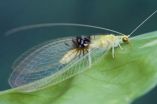(Press-News.org) New research from the University of Warwick suggests that Berlin has the best democratic space in the world, topping a list that includes London, Washington and Tokyo.
The list appears in a new book, 'Democracy and Public Space: The Physical Sites of Democratic Performance' written by Dr John Parkinson, from the University of Warwick's Politics and International Studies department.
Dr Parkinson carefully selected 11 capital cities and assessed how well they provide space for all kinds of democratic action. He visited Berlin, Washington, Ottawa, Canberra, Wellington, Hong Kong, Mexico City, London, Tokyo, Santiago and Cape Town.
He said: "In my book I have tried to answer the question, what makes for a good capital city from a democratic point of view? Even though revolutions and protests may be co-ordinated via Facebook and Twitter, they still involve real people who take up, occupy, share and contest physical space. Politics is still a physical pursuit, even in an online, interconnected world."
Dr Parkinson looked at a number of criteria, including the accessibility of public buildings, but also the availability of public meeting space, parks and footpaths, public transport systems and more.
"I wanted to see not just how formal buildings like parliaments work, but how easy it is for citizens to perform democratic roles in those cities. Plenty of cities are good for shopping and tourism; democratic citizenship is harder."
Berlin came top of the list because it ticked many of the boxes. Dr Parkinson attributes this to the city's past as a symbolic battleground.
He said: "Berlin has been the site of so many battles over the use of public space for political purposes. Right now, battles continue over how far the city should go erasing the physical remnants of Cold War divisions. Even questions over sites like Tempelhof Airport, a Nazi-era building but an important symbol of the Berlin Airlift, are unresolved. But the very fact that people have these debates is healthy – it means Berliners are more likely to value space for expressly democratic purposes, and resist attempts to turn it over to purely commercial or leisure interests."
Cape Town is bottom of the list largely because the public is heavily stratified there, the legacy of the apartheid era. Dr Parkinson also notes that in Washington DC the needs of heritage and tourism dominate the democratic spaces, such as the Congress building. "
London is placed eighth in the list because: "Comparatively, London is a ferociously expensive city to get around; its public spaces are policed to an extent unmatched except by Washington; and it is indulging in the privatisation of footpaths and roadways."
The full list of cities:
1) Berlin
2) Wellington
3) Ottawa
4) Canberra
5) Washington, DC
6) Hong Kong
7) Mexico City
8) London
9) Tokyo
10) Santiago/Valparaiso
11) Cape Town
###Notes to editors
Democracy and Public Space: the Physical Sites of Democratic Performance, John R Parkinson, Oxford University Press
To speak to Dr Parkinson call him on 07762 729749 or email j.r.parkinson@warwick.ac.uk. Alternatively contact Kelly Parkes-Harrison, Press and Communications Manager, k.e.parkes@warwick.ac.uk, 02476 150868, 07824 540863.
"Sound vibrations are transmitted to the inner ear via anterior extensions of the swim bladder or via bony ossicles", the biologist Tanja Schulz-Mirbach explains how swim bladders may serve for hearing. The hearing sensitivity improves considerably in this way. The anterior part of the swim bladder functions in specialized fish species similar to an ear drum. Up to now the effects of the different swim bladder morphologies have not been investigated in detail in cichlid fishes. The behavioural biologists of the University of Vienna Tanja Schulz-Mirbach and Friedrich Ladich ...
Astronomers have constructed the largest-ever three-dimensional map of massive galaxies and distant black holes, which will help the investigation of the mysterious "dark matter" and "dark energy" that make up 96 percent of the universe.
The map was produced by the Sloan Digital Sky Survey III (SDSS-III).
Early last year, the SDSS-III released the largest-ever image of the sky, which covered one-third of the night sky. The new data, "Data Release 9" (DR9), which publically releases the data from the first two years of this six-year project, begins expansion of this ...
They're everywhere -- in magazines, on the Internet, on television—people with super-thin bodies who are presented as having the ideal body form. But despite the increasing pressure to be thin, more and more of us are overweight. Now, researchers from the Norwegian University of Science and Technology (NTNU) have found that normal weight teens who perceive themselves as fat are more likely to grow up to be fat.
"Perceiving themselves as fat even though they are not may actually cause normal weight children to become obese as adults," says Koenraad Cuypers, a researcher ...
Research at Bangor University has identified a switch in cells that may help to kill tumors with heat. Prostate cancer and other localized tumors can be effectively treated by a combination of heat and an anti-cancer drug that damages the genes. Behind this novel therapy is the enigmatic ability of heat to switch off essential survival mechanisms in human cells. Although thermotherapy is now more widely used, the underlying principles are still unclear.
In a recent publication in the Journal of Cell Science (http://jcs.biologists.org/content/early/2012/07/10/jcs.104075.abstract) ...
Active video games, also known as "exergames," are not the perfect solution to the nation's sedentary ways, but they can play a role in getting some people to be more active.
Michigan State University's Wei Peng reviewed published research of studies of these games and says that most of the AVGs provide only "light-to-moderate" intensity physical activity.
And that, she says, is not nearly as good as what she calls "real-life exercise."
"For those not engaging in real-life exercise, this may be a good step toward this," said Peng, an assistant professor of telecommunication, ...
Stressed and non-stressed persons use different brain regions and different strategies when learning. This has been reported by the cognitive psychologists PD Dr. Lars Schwabe and Professor Oliver Wolf from the Ruhr-Universität Bochum in the Journal of Neuroscience. Non-stressed individuals applied a deliberate learning strategy, while stressed subjects relied more on their gut feeling. "These results demonstrate for the first time that stress has an influence on which of the different memory systems the brain turns on," said Lars Schwabe.
The experiment: Stress due to ...
VIDEO:
With the aid of tiny silicon tubes and one of Europe's most sophisticated centres for microscopy, scientists from University of Copenhagen have been able for the first time to observe...
Click here for more information.
Chronic infections are a large and growing problem throughout the developed world, and intensive research is being conducted in ways to combat the recalcitrant bacteria. When bacteria aggregate into so-called biofilm, they become resistant to antibiotics. ...
Contrary to popular belief, purified drinking water from home faucets contains millions to hundreds of millions of widely differing bacteria per gallon, and scientists have discovered a plausible way to manipulate those populations of mostly beneficial microbes to potentially benefit consumers. Their study appears in ACS' journal Environmental Science & Technology.
Lutgarde Raskin and colleagues Ameet Pinto and Chuanwu Xi explain that municipal water treatment plants typically try to minimize the growth of microbes in the huge filters that remove small particles and substances ...
With the best explosive detectors often unable to sniff out the tiny amounts of TNT released from terrorist bombs in airports and other public places, scientists are reporting a potential solution. Their research in ACS' journal Analytical Chemistry describes development of a device that concentrates TNT vapors in the air so that they become more detectable.
Yushan Yan and colleagues point out that TNT and other conventional explosives are the mainstays of terrorist bombs and the anti-personnel mines that kill or injure more than 15,000 people annually in war-torn countries. ...
Green lacewings are delicate green insects with large, lace-like wings that live in a wide variety of habitats, especially tropical forests. Adults mostly feed on flowers, but the larvae are ferocious predators of other insects, frequently carrying the dead carcasses of their prey on their backs after killing them using their enormous, sucking tube-like jaws.
In this study, a beautiful new species of green lacewing in the genus Semachrysa is described from the Malaysian rainforest. The wing pattern is its most distinctive feature. Yet, this discovery could have been ...


